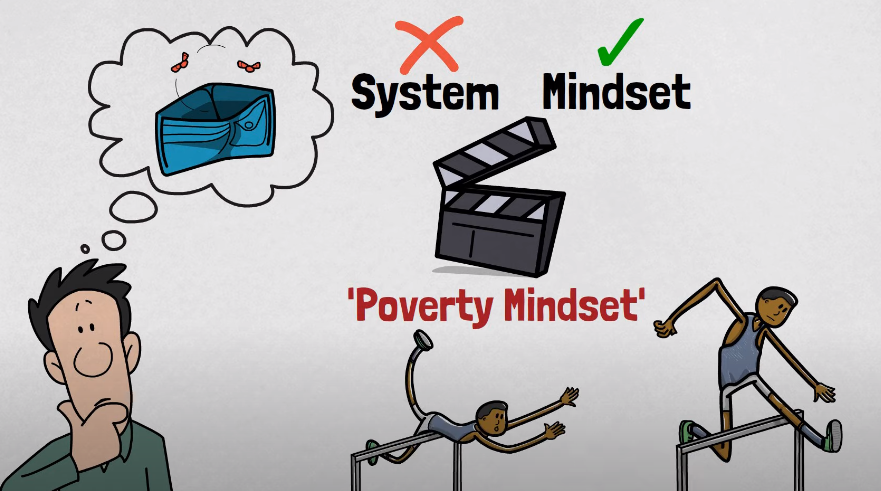Introduction
Retirement planning is a critical aspect of financial management, and understanding the necessary savings at different stages of life is vital for a secure future.
In this discussion, we will explore the recommended savings milestones for individuals at various ages, aiming to retire comfortably at 65.
Age 25-30

Intro: How much money should you have saved at every age in order to be prepared for retirement? It’s critically important to know where you currently stand so you can make adjustments if needed.
By taking a look at what an individual should have put away depending on age, you could see where you currently stand.
Take a look at how much you should have set aside by each age in order to retire at 65. H20, don’t worry about having much money saved at this age; instead, make every effort to avoid incurring debt.
If you must borrow money for college, attend a school that fits your budget and work your way through it. Don’t make the mistake that many young individuals make of viewing college as a carefree period. Avoid the temptation to finance a brand new automobile for 60, 72, or 84 months; the thrill will wear off quickly, but the money will keep rolling in for years.
Staying with relatives or renting a cheap house will keep your living costs as low as possible. Finally, consider starting a retirement account such as a Roth IRA.
You don’t need millions of dollars to get started; even 50 or 100 will help you attain some experience as an investor.
Early retirement savings
At age 25, you have saved half of one year’s income; ideally, by your mid-20s, you should have saved around half of a year’s income for retirement. If your annual salary is fifty thousand dollars, you should plan to retire with twenty-five thousand dollars in savings. This is certainly an attainable quantity if you are frugal with your expenditures.
Don’t worry if you’re not quite there yet; financial stability takes time to achieve, especially when you’re just starting out in your profession.
For a variety of reasons, your annual paycheck probably doesn’t allow much room for savings. If you borrowed money to attend college, you must repay your student loans, and rent can rapidly eat up a substantial portion of your budget.
Furthermore, you may be faced with additional major bills, such as automobile replacements, making retirement savings the last thing on your mind.
Keep your costs as minimal as possible so you can focus on settling in and building your income.
Financial Milestone at 30
Age 30; at age 30, one year of income. You should strive to have a full year’s income and assets by the age of 30. If your annual salary is fifty thousand dollars, you should have around fifty thousand dollars set aside for your future.
Most people at this age are likely more worried about paying loan payments, buying a home, or beginning a family.
Buying a property can also be a fantastic investment for your future, but don’t dismiss the concept of investing entirely.
To put it another way, don’t spend your entire paycheck. When calculating your earnings and expenses, make sure to allow at least 10 percent of your income for investing. If you’re falling behind, you still have plenty of time to catch up, and you may do so within reason by making some wise financial decisions.
Age 30-35
Age 30-35: at the age of 35, two times their income. By the age of 35, you should strive to have invested double your yearly salary.
With a $50,000 salary, you should have around a hundred thousand dollars in savings, which is feasible provided you are frugal with your expenditures. When you’re in your 30s, it’s tempting to keep up with your friends by purchasing new vehicles and residences, but this will only hold you back.
This savings amount is readily feasible by keeping housing costs under control and avoiding huge amounts of debt.
Age 40-45

Age 40–45; at age 40, five times your income. When you reach your 40s, you should have five times your current salary in retirement.
This would be around two hundred and fifty thousand dollars with a fifty thousand dollar salary. If you started investing a decade or two ago, this should be rather simple; however, those who started later will have a more difficult time.
Don’t worry if you’re falling behind; there’s still time to catch up if you start saving actively.
At this time in your life, it’s critical to resist the temptation to keep up with the Joneses by upgrading your home and buying brand new automobiles to appear wealthy. Prioritize long-term financial security over short-term appearances.
In conclusion, understanding the recommended savings targets for different age groups provides a roadmap for effective retirement planning.
By making informed financial decisions and starting early, individuals can work towards a comfortable and secure retirement.
Age 50
Age 50 10 times your income by the age of 50. You should aim to have 10 times your current salary in retirement. This will be five hundred thousand bucks with a fifty thousand dollar salary, which may be daunting, but by this point, compound interest has well outpaced whatever amount you’re contributing to your portfolio.
If you have fifty thousand dollars invested in the S&P 500, it will rise by fifty thousand dollars each year on average. Large quantities of compound interest, along with the fact that your salary is most likely at a career high, make it simple to make significant progress.
Age 60
Age 60 20 times your income as you approach the normal retirement age of 60. Someone who is almost ready to retire should have 20 times their income and investments. With a $50,000 salary, it equates to one million dollars. This should be possible with compound interest on your side. If you have this much saved, you may start making changes and perhaps cease investing completely if you are on course to exceed the required amount.
Age 65

Age 65 25 times your income by the age of 65, or the normal retirement age. You should have 25 times your required retirement income. If you intend to live on fifty thousand dollars per year, you need to have around one million two hundred and fifty thousand dollars invested. With 25 times your salary invested, you may now remove four percent of your portfolio every year without running out of money or having to rely on additional income streams.
It is advised that you invest 15% of your salary for retirement, and chances are you’ll be quite wealthy if you do. Starting this early in your career is one of the finest decisions you can make. Setting aside so much of your money might be scary at first, but if you’re just starting out, you can start with five percent or even less.
Don’t stress about how much you’re saving; just get started. You can always work your way up as you make more money and become more adept at identifying methods to reduce excessive expenditure. When you make wise decisions about keeping your spending in check and finding methods to improve your income, you’ll be astonished at how simple it can be. These figures should only be used as a guideline, especially for younger people who want to be sure they’re on the right path when it comes to retirement savings. Most people do not have anything near these amounts when they’re young; your priorities should be making little steps that will accumulate over time.
Investing simply five or ten percent of your income, for example, should be a top priority. Of course, there are additional factors to consider, depending on your scenario.
Conclusion
Conclusion: These statistics predict removing four percent of your assets annually during retirement. For many years, four percent was regarded as a safe withdrawal rate, implying that you could spend that much of your portfolio each year. Others will withdraw more, while others will withdraw less, but this is something you need to investigate and determine for yourself.
When would you like to retire? If you want to retire before the age of 65, you will need to change these figures. At a much younger age, you may become financially independent and accumulate 25 times your yearly expenditure. This may appear to be an impossible undertaking, but it is simpler than you think. Spending less makes it far simpler to accumulate a large enough Nest Egg to pay your costs.
When planning for retirement, keep your tax requirements in mind. If you have all of your funds tied up in a 401k or conventional IRA, you should be aware of how this may affect your retirement income. You may find yourself paying 30% or more of your income in taxes. A Roth IRA, on the other hand, will not be subject to any additional income tax when you retire.
These are, as you can see, two quite distinct circumstances. Each account type has advantages and disadvantages, but preparing for taxes to the best of your abilities will help you to be more precise. You should also take into consideration social security income. If your estimated social security benefit is high, you may not need to retire on 25 times your salary. Some people live solely on Social Security and never touch their retirement funds. However, you can’t even start collecting it until you reach a certain age, so that’s something to consider.



